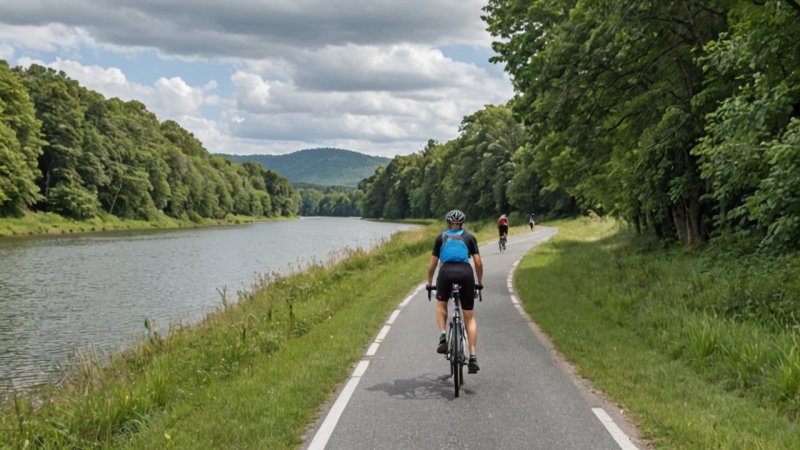Cycling is an invigorating and enjoyable activity that provides great exercise and a sense of adventure. For beginners, choosing the right cycling route is crucial to ensure safety, comfort, and an enjoyable experience. The right path can help you build confidence and develop your cycling skills. Here’s a guide that outlines the best factors to consider when selecting a cycling route as a beginner.
1. Assess Your Fitness Level
Before embarking on a cycling journey, it’s important to evaluate your current fitness level. Are you just starting out or have you been active in other sports? Understanding your endurance will help you choose routes that match your capability.
2. Look for Flat Terrain
As a beginner, it’s advisable to select routes that feature flat terrain. Hills can be challenging and may lead to fatigue early in your ride. Flat paths will allow you to focus on building your cycling technique without the added strain of elevation changes.
3. Choose Dedicated Bike Paths
Dedicated bike paths are designed specifically for cyclists, providing a safe and enjoyable riding experience. Look for local parks or urban areas with bike lanes to minimize the risk of accidents and ensure a smoother ride.
4. Consider Distance
When selecting a route, start with shorter distances that you can comfortably ride. Gradually increase the distance as your fitness and confidence improve. A good rule of thumb for beginners is to keep your rides between 5 to 10 miles initially.
5. Research Local Cycling Clubs
Joining a local cycling club can be a great way to discover beginner-friendly routes. Experienced cyclists can offer valuable insights and guidance, ensuring you have a supportive environment as you learn.
6. Check Traffic Levels
Safety should be a top priority. Try to choose routes with low traffic levels or those that avoid busy roads altogether. This will help you focus on your cycling without the stress of navigating through congested areas.
7. Explore Scenic Routes
One of the joys of cycling is the opportunity to enjoy nature and beautiful landscapes. Look for routes that offer scenic views, parks, or waterfronts. This not only enhances the experience but can also motivate you to ride more often.
8. Use Cycling Apps
There are various cycling apps available that can help you find suitable routes based on your preferences. These apps often provide maps, distance tracking, and even user reviews on different paths, making your planning easier.
9. Consider Weather Conditions
Before heading out, always check the weather forecast. Rainy or excessively windy conditions can make cycling difficult or unsafe, especially for beginners. Plan your rides for clear and pleasant weather to ensure a more enjoyable experience.
10. Listen to Your Body
Lastly, always listen to your body. If you feel tired or uncomfortable, it’s okay to cut your ride short or take breaks. Overexerting yourself can lead to injuries, so it’s essential to prioritize your well-being.
In summary, choosing the right cycling route as a beginner is essential to foster a positive experience and develop a lifelong love for cycling. By assessing your fitness level, opting for flat terrain, utilizing dedicated bike paths, and considering your comfort and safety, you can enjoy the ride while improving your skills. Remember to explore scenic routes, use technology to assist you, and always listen to your body. Happy cycling!






